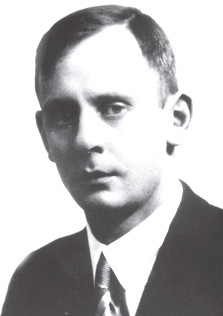The contribution of Vladas Jakubėnas (1904-1976) to Lithuanian music culture has never been canonized. It is difficult to define which of his legacies - as composer or music critic - is the principal, or at least more significant sphere. The quandary arises because Jakubėnas' musicological writings are notably extensive, and the number of his musical compositions is rather limited.
 |
When perusing the ultimate list of Jakubėnas' works, it appears that the composer's style shifted according to his life circumstances (in the broadest sense), and that his Berlin period (1928-1932) was the most important in development of his creative career. Having gained a composition background with Jāzeps Vitols at the Riga Conservatory, the young composer received scholarship from the Lithuanian Ministry of Education, and went off in 1928 to study at the Staatliche Akademische Hochschule für Musik in Berlin, where he landed in the whirlwind of European modern music. Both Jakubėnas and reviewers of his music acknowledge the influence that Paul Hindemith had on his work. Though there are no existing commentaries by the composer himself regarding lessons with the famous German composer and performer Franz Schreker, the 'results of Berlin' are apparent in his works - including in the neoclassical compositions, such as Symphony no.1, Prelude and Triple Fugue for Strings in D minor, and the two-part String Quartet in A minor – which are deemed both by Jakubėnas' contemporaries and present-day music critics as being his most interesting compositions. His Symphony was performed in 1932 by the Berlin Radio Symphony Orchestra, conducted by Franz Schreker.
However, his 'Berlin works' are very different from those written later in Lithuania. The Lithuanian ones are more romantic, and the composer's contemporaries noted Jakubėnas stating that he consciously used a more moderate musical language, for, as he so gently expressed it, Lithuania at that time was a "remote and lyrical country". Perhaps this 'compromise' was also a deliberate adjustment to his surroundings? Be that as it may, the composer's solo and choral songs, written in Lithuania, do lean towards the late romanticism. Symphonies no.2 and no.3, Rhapsody in E minor for Symphony Orchestra, Melody-Legend for violin and piano, and Rhapsody-Serenade for cello and piano offer a fusion of romanticism and impressionism which was fairly common for Lithuanian music at that time. Jakubėnas has been compared to Sibelius, and perhaps the traditional aspect of his creativity contributed to the fact that his works were performed fairly frequently: Jakubėnas' Rhapsody and Symphony no.2 were heard quite often in Germany, Symphony no.1 was played by the Chicago Symphony Orchestra back in 1933, and the second movement of his Symphony no.2 - Minuet - became one of the most popular symphonic pieces, performed on more than one occasion by all of the Lithuanian conductors of the day, both in Lithuania and the USA.
His later forced emigration to Germany in 1944, and his move to the USA in 1949 basically ruined Jakubėnas' creative career. During that time, the composer was essentially involved only in adapting works written in Lithuania, for various combinations of performers. For example, he wrote
The Forest Festival, a suite for symphony orchestra, based on surviving fragments of piano score of
The Fairy Belt of Vaiva, a ballet after a Lithuanian folk tale, which was lost during the war; he also arranged five fragments in the form of pieces for piano. Jakubėnas' new piece for strings,
Intermezzo rustico - a reminder of his reputation as 'Lithuanian Hindemith' - was performed in 1962 at a concert of the Chicago Section of the ISCM.
The work of Vladas Jakubėnas as music critic is immensely important. He wrote more than 1,000 articles, a large portion of which were surveys of the musical life in various European countries, and analyses of trends in modern music. Noteworthy writings include "Under the skies of German modern music", 1933; "The crisis in modern music", 1933; "From travels around Europe", 1935; "German music at the verge of a national turning-point", 1942. Jakubėnas worked with the most serious and prestigious Lithuanian periodicals, and his ideas and reports lie at the foundation of the present-day historiography of Lithuanian music.
© Rita Nomicaitė
Lithuanian Music Link No. 8

